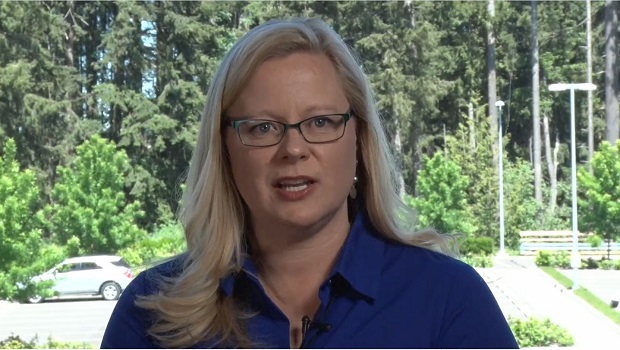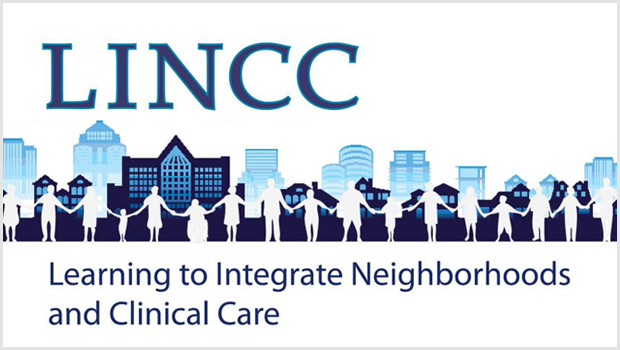Partnering with research, CRS program addresses social needs in primary care

Cindee DeWitt describes how Kaiser Permanente Washington’s community resource specialist program stands out among efforts to meet patients’ social needs
By Cindee DeWitt, assistant manager of the Community Resource Specialist program in Kaiser Permanente Washington’s Mental Health and Wellness department
“It was amazing to watch the stress leave the patient’s body as they talked with the community resource specialist and understood there was someone that was going to help them.”
That’s just one of the many positive comments I heard recently from colleagues visiting us from Kaiser Permanente’s national office in Oakland. Representing three groups—National Community Health, National Medicaid, and Innovation—our visitors spent 3 days in early December here at Kaiser Permanente Washington, learning about our community resource specialist (CRS) program and what makes it unique.
Their visit included trips to our primary care clinics in Federal Way, Renton, and Capitol Hill, where they talked with CRSs about their work and observed them with members. The group is making similar visits to Kaiser Permanente’s 7 other regions, with the ultimate goal of informing Kaiser Permanente’s emerging national strategy around meeting our members’ social needs—such as food insecurity, social isolation, or difficulty paying rent.
Finding ways to identify and address the social needs of our members is at the heart of what we do in the CRS program. Launched in 2017, the program now includes 27 CRSs who are available to provide support to members in all our primary care clinics. Along with providing brief health coaching, our CRSs are specialists in connecting members to community-based resources to help meet their needs around things like housing, transportation, parenting support, and healthy food access. As an example, a CRS recently worked with a 45-year-old member with two children who was on the verge of losing her apartment due to a domestic violence dispute. The CRS connected her to legal information and resources that helped her and her children stay in their home.
Community health workers as members of the primary care team
To better support members with social needs like this, Kaiser Permanente has a goal of developing a national strategy for implementing a community health worker (CHW) model across its 8 regions. Our CRS program here at Kaiser Permanente Washington is based on a CHW model—in which a lay person specializes in helping coordinate care and community-based resources for individuals with complex health conditions. But our program has an important distinction: Our CRSs are embedded in our primary care clinics and viewed as an integral part of a patient’s care team.
Being part of the team allows CRSs to leverage the trust and relationships members already have with their providers and care teams. And in turn, patients are more open and accepting of the support CRSs provide to help them achieve their health and wellness goals and ensure their social needs are met.
Another thing that makes the CRS program unique among CHW models is that, by working with patients with mild to moderate resource needs in primary care, we hope to make a difference before their needs escalate or their health conditions worsen and require higher levels of care. Models in other health systems tend to focus on working with patients who have specific medical conditions or who already have more complex needs.
Our research capabilities are key to this unique approach—and to our ongoing success
When you consider how our CRS program got started, it’s not surprising that it stands out among CHW models of care. We first developed the CRS role in 2013-2014 as part of an externally funded research study called “Learning to Integrate Neighborhoods and Clinical Care,” or LINCC. Led by Dr. Clarissa Hsu, a medical anthropologist at Kaiser Permanente Washington Health Research Institute (KPWHRI), LINCC brought together patients and health professionals from Kaiser Permanente Washington to design the CRS role. Then we pilot tested the role in 2 primary care clinics.
Our results showed that the CRSs had a positive impact on patients—prompting Kaiser Permanente Washington to spread the role systemwide and to tap into everything we learned in the LINCC study.
I’m happy to report that this important learning continues today. Through Kaiser Permanente Washington’s Learning Health System (LHS) Program, we’ve partnered with scientists at KPWHRI to implement the CRS role across our system—learning with each clinic about what works best to spread and sustain this valuable service. Through our LHS partnership, we’re also conducting a comprehensive evaluation of the CRS program—looking at its impact on patients and care teams and helping to identify best practices for providing CRS services to our members.
During the recent site visit, our partners in the LHS Program shared findings about the types of needs our members have and the high level of satisfaction they feel with their interactions with a CRS. Having this knowledge helps us focus our resources and find practical ways to continually improve the CRS role here at Kaiser Permanente Washington. It also helps inform key decisions about what Kaiser Permanente can do nationally—across all its regions—to help meet members’ social needs.
I am so proud of all our CRSs and the great work they do every day to provide whole-person care that focuses on our members’ physical, mental, and social health. And I’m excited for all the things we’ll be able to learn and share as our implementation and evaluation work continues.


